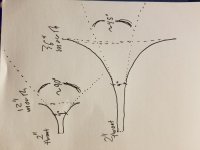C-Beizier Curves
Important is the notion of "farness"; i.e., curvature is proportional to curve length. This is the curve type, preferred for roadway curve transition design. The beauty of the C-Bezier curve and its derivatives, is that segments of it may be configured to fall on the loci of conic sections (straight lines, circles, ellipses, parabolas and hyperbolas) as well.
Waveguides are cylindrical (with parallel surface(s)), and may have flared horn sections added to them for energy or collection or dispersion. To call a horn a waveguide obfuscates their different functions. The most unrecognized horn function, is the collection and magnification of ambient acoustic energy.
Connect a horn loaded compression driver to a preamplifier (via transformer) and listen to what you get. Do a scope comparison with an additional microphone input. This method provides a way to explore horn artifacts on the cheap. WHG
Sorry, I don't follow. I've been using Bezier curves for decades, i.a. to generate a simulated air traffic, smoothly changing velocity vectors, etc. They are great for these tasks - extremely handy. For horns, why not, but let's not call it a "horn type" - it is not. You can get almost any shape with these curves, including OSWG or anything else 🙂
Important is the notion of "farness"; i.e., curvature is proportional to curve length. This is the curve type, preferred for roadway curve transition design. The beauty of the C-Bezier curve and its derivatives, is that segments of it may be configured to fall on the loci of conic sections (straight lines, circles, ellipses, parabolas and hyperbolas) as well.
Waveguides are cylindrical (with parallel surface(s)), and may have flared horn sections added to them for energy or collection or dispersion. To call a horn a waveguide obfuscates their different functions. The most unrecognized horn function, is the collection and magnification of ambient acoustic energy.
Connect a horn loaded compression driver to a preamplifier (via transformer) and listen to what you get. Do a scope comparison with an additional microphone input. This method provides a way to explore horn artifacts on the cheap. WHG
Last edited:
The origin of bézier curves comes from a 1912 mathematical discovery: the Bernstein Polynomial. However, it would be some 50 years before the bézier made its way to computer graphics.
Although it was Pierre Bézier who patented and popularized them, it was Paul de Castelijau who actually invented the bézier curve for Cirtoën in 1959. The algorithm used to calculate a bézier curve is known as ‘de Casteljau’s algorithm’.
Bézier was responsible for the intuitive bézier control system: the nodes with attached control handles used to manipulate the curves, optimizing bézier curves for CAD. These handles define the shape of the curve on either side of the node allowing human-computer interaction.
This car was designed with the aid of those primitive CAD techniques:

Although it was Pierre Bézier who patented and popularized them, it was Paul de Castelijau who actually invented the bézier curve for Cirtoën in 1959. The algorithm used to calculate a bézier curve is known as ‘de Casteljau’s algorithm’.
Bézier was responsible for the intuitive bézier control system: the nodes with attached control handles used to manipulate the curves, optimizing bézier curves for CAD. These handles define the shape of the curve on either side of the node allowing human-computer interaction.
This car was designed with the aid of those primitive CAD techniques:

Connect a horn loaded compression driver to a preamplifier (via transformer) and listen to what you get. Do a scope comparison with an additional microphone input. This method provides a way to explore horn artifacts on the cheap. WHG
This is ingenious, I haven't heard or read about this before.
Huh......never realized a Citroen’s front wheels were spaced so much wider than the rear, that and the long wheelbase must make for some interesting cornering characteristics.
I've done that, run the horn and CD as a microphone. It does allow you to hear the coloration in a different way. Gives a good idea of the limited bandwidth, too.This is ingenious, I haven't heard or read about this before.

Actually it corners quite well, even though it's not a sporty car.
The hydropneumatic suspension was good enough to be licensed by Maserati, Mercedes-Benz, Rolls-Royce & Bentley ao.
Citroën built several short wheelbase rally versions, which were very succesful.

The hydropneumatic suspension was good enough to be licensed by Maserati, Mercedes-Benz, Rolls-Royce & Bentley ao.
Citroën built several short wheelbase rally versions, which were very succesful.

Last edited:
Huh......never realized a Citroen’s front wheels were spaced so much wider than the rear, that and the long wheelbase must make for some interesting cornering characteristics.
All front drive cars are this way, this is one of a innumerable things that everyone is looking everyday without considering it

Off topic:
Well, a test run this way ( by a brand) used in what seems to me like a commercial advertisement ( remember my remark about speaker position for a nice picture which doesn't hide the 1037 or 1038 used inwall in a control room which 'wanted to be the first to try them'... all this shout 'advertisement' to me!) doesn't really seems objective.
Even worst when you don't point to the 2 last sentences in the text of fig8. which seems unfair given it seems to me you make your mind from this comparison ( or you think this is a relevant comparison).
Conventional coax a non sense and high distortion?
Maybe, but my experience is different.
The low listening fatigue from 10 hours sessions using Tannoy's 15 Dmt2 ( or system range) i experienced is usually considered as the outcome of low distortion within the loudspeaker. And this is more or less a common comment from engineers using this on a daily basis. Coax do have flaws ( like everything else) but not this one ime.
I am currently experiencing this in my living room too... so i'm doubtfull. And i think you are partial in your comment. 😉
And a last thing about 'non conventional coax': the technology used by Genelec is not a revolution. Cabasse used to have this kind of ( dual or tri )concentric drivers since mid 90's. Where the 8531 is interesting is in the way they used slot loaded woofer and low diffraction box in my view. And the end result is not dissimilar to past Cabasse models.
Mark, thank you!
Oh, I've forget to mention that the conventional non-coaxial configuration is a poor performer in this test, so considering it as low distortion design is nonsense 🙄
Well, a test run this way ( by a brand) used in what seems to me like a commercial advertisement ( remember my remark about speaker position for a nice picture which doesn't hide the 1037 or 1038 used inwall in a control room which 'wanted to be the first to try them'... all this shout 'advertisement' to me!) doesn't really seems objective.
Even worst when you don't point to the 2 last sentences in the text of fig8. which seems unfair given it seems to me you make your mind from this comparison ( or you think this is a relevant comparison).
Conventional coax a non sense and high distortion?
Maybe, but my experience is different.
The low listening fatigue from 10 hours sessions using Tannoy's 15 Dmt2 ( or system range) i experienced is usually considered as the outcome of low distortion within the loudspeaker. And this is more or less a common comment from engineers using this on a daily basis. Coax do have flaws ( like everything else) but not this one ime.
I am currently experiencing this in my living room too... so i'm doubtfull. And i think you are partial in your comment. 😉
And a last thing about 'non conventional coax': the technology used by Genelec is not a revolution. Cabasse used to have this kind of ( dual or tri )concentric drivers since mid 90's. Where the 8531 is interesting is in the way they used slot loaded woofer and low diffraction box in my view. And the end result is not dissimilar to past Cabasse models.
Mark, thank you!
Last edited:
Last edited:
Yes this an example Ro.
The one i've seen/ listened had a different color scheme, black and white rather than all black membrane.
I've spent countless hours listening to the 2 way version of the one in picture. Tc21 iirc on a Goelette 500 ( my bad: bc12 is the tweeter i know).
Nice sound very accurate but no directivity control and short on bass ( this is,nt related to the concentric driver thoug, rather the Goelette design). That said i could live with that in my living room and be happy most of the time even if it doesn't fulfill all my expectations.
I've never heard the tri version like in the picture but heard good things about it. That said given the price asked for a 'Sphere' i would spend my ( hypothetical) money in something else... much more like what Camplo want.
Or this, even if this is a distortion stompbox ( a little bit bulky) 😉 :
Google Image Result for http://www.lockwoodaudio.co.uk/images/tannoy2_lrg.jpg
The same in place in a french studio:
Google Image Result for http://www.studioblackbox.fr/Studio_Black_Box_Francais/Black_Box_-_Equipement_files/006-filtered.jpg
One of the seven pair built. Other known user is Vangelis which used them during his 'glorious area' ( Blade Runner soundtrack, Chariot of fire,....).
The one i've seen/ listened had a different color scheme, black and white rather than all black membrane.
I've spent countless hours listening to the 2 way version of the one in picture. Tc21 iirc on a Goelette 500 ( my bad: bc12 is the tweeter i know).
Nice sound very accurate but no directivity control and short on bass ( this is,nt related to the concentric driver thoug, rather the Goelette design). That said i could live with that in my living room and be happy most of the time even if it doesn't fulfill all my expectations.
I've never heard the tri version like in the picture but heard good things about it. That said given the price asked for a 'Sphere' i would spend my ( hypothetical) money in something else... much more like what Camplo want.
Or this, even if this is a distortion stompbox ( a little bit bulky) 😉 :
Google Image Result for http://www.lockwoodaudio.co.uk/images/tannoy2_lrg.jpg
The same in place in a french studio:
Google Image Result for http://www.studioblackbox.fr/Studio_Black_Box_Francais/Black_Box_-_Equipement_files/006-filtered.jpg
One of the seven pair built. Other known user is Vangelis which used them during his 'glorious area' ( Blade Runner soundtrack, Chariot of fire,....).
Last edited:
All those coaxial, tri-axial drivers in (semi) spherical enclosures: Cabasse, Eclipse, KEF etc... they do some things right, but I've found them lacking in important other areas.
If you want a loudspeaker that isn't huge and plays most music well, a 3-way Harbeth or ATC is hard to beat.
You could build a studio monitor type 2-way with either a small comp. driver + 10" or a (waveguide loaded) high quality dome tweeter + linear hifi subwoofer driver (Morel, SEAS, SB-Acoustics, Peerless etc.). An Audio Note AN-E of Devore Urangutan clone would give some extra sensitivity.
Now back to big horn speakers.
horn speakers.
If you want a loudspeaker that isn't huge and plays most music well, a 3-way Harbeth or ATC is hard to beat.
You could build a studio monitor type 2-way with either a small comp. driver + 10" or a (waveguide loaded) high quality dome tweeter + linear hifi subwoofer driver (Morel, SEAS, SB-Acoustics, Peerless etc.). An Audio Note AN-E of Devore Urangutan clone would give some extra sensitivity.
Now back to big
 horn speakers.
horn speakers.
Last edited:
Yes this is my point, we all have different 'important areas'.
So dismiss a concept for your own preference is ok for yourself, not for everyone...
You talk about Atc, i lived with scm110A for 2 years as my mains ( at work ) and never liked them. They do some things really well ( ambience info about recording space is incredible with their mid dome) but for the music i like they are just... uninteresting ( for my own preference)! And i would not use them in an untreated room, they are just too wide directivity for my taste.
That said i understand why classical music engineers crave for it... and dislike Tannoy. I'm definitely not into classical even if i listen to it from time to time.
So dismiss a concept for your own preference is ok for yourself, not for everyone...
You talk about Atc, i lived with scm110A for 2 years as my mains ( at work ) and never liked them. They do some things really well ( ambience info about recording space is incredible with their mid dome) but for the music i like they are just... uninteresting ( for my own preference)! And i would not use them in an untreated room, they are just too wide directivity for my taste.
That said i understand why classical music engineers crave for it... and dislike Tannoy. I'm definitely not into classical even if i listen to it from time to time.
Last edited:
That's an important consideration. I listen to electronic music a lot. You can't beat horns in that case.
That said i understand why classical music engineers crave for it... and dislike Tannoy. I'm definitely not into classical even if i listen to it from time to time.
...In spite of the many briljant composers your country has brought forth

All these things are in the (A) concentric group that correspond to the worst ever possible performer in the multitone signal-to-distortion test, a Genelec sam is simply two times better.The low listening fatigue from 10 hours sessions using Tannoy's 15 Dmt2 ( or system range) i experienced is usually considered as the outcome of low distortion within the loudspeaker. And this is more or less a common comment from engineers using this on a daily basis. Coax do have flaws ( like everything else) but not this one ime.
And a last thing about 'non conventional coax': the technology used by Genelec is not a revolution. Cabasse used to have this kind of ( dual or tri )concentric drivers since mid 90's. Where the 8531 is interesting is in the way they used slot loaded woofer and low diffraction box in my view. And the end result is not dissimilar to past Cabasse models.
I'm sorry for those who have digressed.Now back to bighorn speakers.
Camplo. Hopefully this very crude sketch can help visualize why larger horns (non constant directivity types) of the same throat size beam more at high frequencies than their smaller counterparts. My question is, can the radiation pattern of a given frequency really be approximated by looking at a corresponding diameter on the horn and measuring angle? Or is this really as I'm guessing just a crude way of understanding things? For instance, at the measured 4", for what frequency would the angle measurement approximate the angle at which spl would begin to fall off significantly? Just for fun I'm guessing 7k. Perhaps the approximation is useful for the throat but not so much towards the mouth? . I should play in hornresp I guess, but it's not handy at the moment.
Attachments
I'm sorry for those who have digressed.
That would include me 😉
I am sorry if that little irony went down the wrong way.
Camplo. Hopefully this very crude sketch can help visualize why larger horns (non constant directivity types) of the same throat size beam more at high frequencies than their smaller counterparts. My question is, can the radiation pattern of a given frequency really be approximated by looking at a corresponding diameter on the horn and measuring angle? Or is this really as I'm guessing just a crude way of understanding things? For instance, at the measured 4", for what frequency would the angle measurement approximate the angle at which spl would begin to fall off significantly? Just for fun I'm guessing 7k. Perhaps the approximation is useful for the throat but not so much towards the mouth? . I should play in hornresp I guess, but it's not handy at the moment.
This might help.
Attachments
-
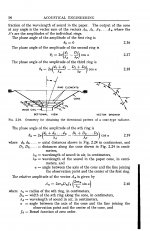 Olson Acoustical Engineering_Pagina_8.jpg336.9 KB · Views: 146
Olson Acoustical Engineering_Pagina_8.jpg336.9 KB · Views: 146 -
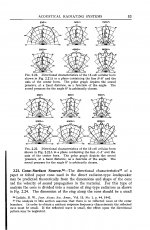 Olson Acoustical Engineering_Pagina_7.jpg460.6 KB · Views: 142
Olson Acoustical Engineering_Pagina_7.jpg460.6 KB · Views: 142 -
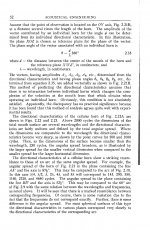 Olson Acoustical Engineering_Pagina_6.jpg580.6 KB · Views: 149
Olson Acoustical Engineering_Pagina_6.jpg580.6 KB · Views: 149 -
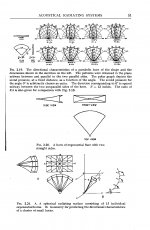 Olson Acoustical Engineering_Pagina_5.jpg328.3 KB · Views: 154
Olson Acoustical Engineering_Pagina_5.jpg328.3 KB · Views: 154 -
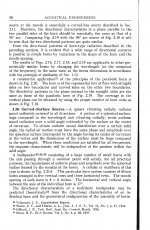 Olson Acoustical Engineering_Pagina_4.jpg590.2 KB · Views: 431
Olson Acoustical Engineering_Pagina_4.jpg590.2 KB · Views: 431 -
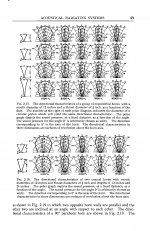 Olson Acoustical Engineering_Pagina_3.jpg597.2 KB · Views: 427
Olson Acoustical Engineering_Pagina_3.jpg597.2 KB · Views: 427 -
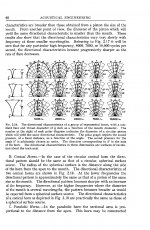 Olson Acoustical Engineering_Pagina_2.jpg593.1 KB · Views: 428
Olson Acoustical Engineering_Pagina_2.jpg593.1 KB · Views: 428 -
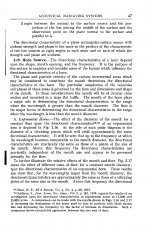 Olson Acoustical Engineering_Pagina_1.jpg589.6 KB · Views: 437
Olson Acoustical Engineering_Pagina_1.jpg589.6 KB · Views: 437 -
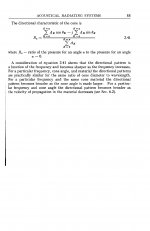 Olson Acoustical Engineering_Pagina_9.jpg186.1 KB · Views: 146
Olson Acoustical Engineering_Pagina_9.jpg186.1 KB · Views: 146
- Home
- Loudspeakers
- Multi-Way
- Is it possible to cover the whole spectrum, high SPL, low distortion with a 2-way?

